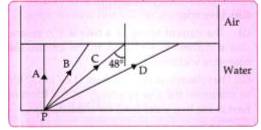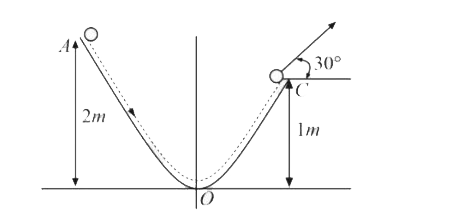Starting from the nostrils, trace the path in sequence which the inspired air takes until it reaches the air sacs.
Step-by-Step Solution:
1. Nostrils: The journey of inspired air begins at the nostrils, which are the external openings of the nose.
2. Nasal Chamber: From the nostrils, air enters the nasal chamber. Here, the air is warmed, moistened, and filtered.
3. Pharynx: The air then moves from the nasal chamber to the pharynx, which is a muscular tube that serves as a passage for both air and food.
4. Larynx: Next, the air passes into the larynx, commonly known as the voice box. The larynx is responsible for sound production and also acts as a passageway for air.
5. Trachea: After the larynx, the air travels down the trachea, which is the main airway leading to the lungs. The trachea is a tube that is reinforced with cartilage to keep it open.
6. Bronchi: The trachea bifurcates (splits) into two primary bronchi, one for each lung.
7. Secondary and Tertiary Bronchi: Inside the lungs, the primary bronchi further divide into secondary and tertiary bronchi, which branch out to different regions of the lungs.
8. Bronchioles: The bronchi continue to branch into smaller tubes called bronchioles, which are the smallest air passages in the lungs.
9. Alveoli: Finally, the air reaches the alveoli, which are tiny air sacs where gas exchange occurs. This is where oxygen is absorbed into the blood, and carbon dioxide is expelled.
Final Sequence: Nostrils → Nasal Chamber → Pharynx → Larynx → Trachea → Bronchi → Bronchioles → Alveoli.
---
Topper's Solved these Questions
- THE RESPIRATORY SYSTEMBOOK - ICSECHAPTER - THE RESPIRATORY SYSTEMEXERCISE - REVIEW QUESTIONS (E. STRUCTURED/APPLICATION/SKILL TYPE)
6 Videos
- THE RESPIRATORY SYSTEMBOOK - ICSECHAPTER - THE RESPIRATORY SYSTEMEXERCISE - PROGESS CHECK
15 Videos
- THE RESPIRATORY SYSTEMBOOK - ICSECHAPTER - THE RESPIRATORY SYSTEMEXERCISE - REVIEW QUESTIONS (C. SHORT ANSWER TYPE )
16 Videos
- THE FLOWERBOOK - ICSECHAPTER - THE FLOWEREXERCISE - REVIEW QUESTIONS (E. STRUCTURED/APPLICATION QUESTIONS )
6 Videos
- TISSUES - PLANT AND ANIMAL TISSUES BOOK - ICSECHAPTER - TISSUES - PLANT AND ANIMAL TISSUES EXERCISE - TOPIC 2 (5 Marks Questions )
40 Videos
Similar Questions
The correct sequence of plant in a hydrosere is :
View SolutionStarting from the pioneer species, trace the sequence that follows in an ecological succession on a bare rock, until climax community is reached in an ecosystem. Name this type of succession.
View SolutionThe speed of sound in air is 330 ms−1 and in water is 1650 ms−1. It takes 2 s for sound to reach a certain distance from the source placed in air. How much time will it take for sound to reach the same distance when the source is in water ?
View SolutionThe path through which the air travels to the lungs is called the respiratory tract.
View SolutionIn lungs, the inspired air ultimately reaches to ...................
View SolutionThe diagram below shows a point source P inside a water container. Four rays A, B, C, D starting from the source P are shown up to the water surface.

Show in the diagram the path of these rays after striking the water surface. The critical angle for water air surface is 48∘.
View SolutionA: The passage starting with the external nostrils
upto the terminal bronchiole constitute the
respiratory part.
R: The respiratory part transport the air to the
alveoli, clears it from the foreign material,
humidified and brings the air to body
temperature.
View SolutionTwo sound waves, originating from the same source, travel along different paths in air and then meet at a point. If the source vibrates at a frequency of 1.0 kHz and one path is 83 cm longer than the other, what will be the nature of interference? The speed of sound in air is 332ms−1.
View SolutionA particle (m = 1kg) slides down a frictionless track (AOC) starting from rest at a point A (height 2m). After reaching C, the particle continues to move freely in air as a projectile. When it reaches point C (height 1 m), the vertical speed of the particle (in m/s) is (Figure drawn is schematic and not to scale , take g = 9.8 m/sec2) [Take ]

View SolutionA particle (m = 1kg) slides down a frictionless track (AOC) starting from rest at a point A (height 2m). After reaching C, the particle continues to move freely in air as a projectile. When it reaches point C (height 1 m), the vertical speed of the particle (in m/s) is (Figure drawn is schematic and not to scale , take g = 9.8 m/sec2) [Take ]

View Solution
